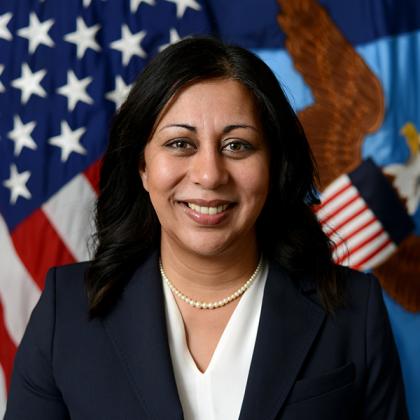CJADC2 Works But Consistent Funding Needed
The Department of Defense (DoD) needs consistent and reliable funding to sustain over time the minimum viable version of combined joint all-domain command and control, or CJADC2, the department recently announced.
Radha Iyengar Plumb, deputy undersecretary of defense for acquisition and sustainment, said on Monday that the capability, especially the command-and-control (C2) part of it, worked and received support from warfighters; but criticized the procedures that could cloud its future.
“Unlike traditional weapons programs, CJADC2 doesn't neatly fit into a specific category fitting into existing programs of records, new programs; it leverages new and nontraditional industry that fundamentally requires flexibility,” she told an audience of innovators, business leaders and officials at AFCEA TechNet Emergence.
Deployment of CJADC2 was recently confirmed at a public event by Kathleen Hicks, deputy secretary of defense, and the classified details were kept to a minimum.
This capability was built combining 20 vendors, according to Plumb.
“We want to measure success by the degree to which we deliver data-driven solutions into the hands of warfighters. And really let this test is whether our warfighters can use these capabilities to deliver results,” Plumb said.
Borrowing the concept of minimum viable product from industry, Plumb offered which criteria represent a minimum viable capability.
They are:
- Did it work?
- Was it endorsed by warfighters?
- Can it be sustained over time?
On the first two points, recent testing was positive.
“Let me just take a moment to note here on this third criteria, sustainability, on how it's really hard in today's circumstances,” she said.

We need a more creative acquisition process.
Doubts were placed over the capacity to sustain the C2 part of CJADC2 due to the wide supplier base and uncertainties around budgeting and regulatory framework to integrate them.
“Congress's impact is critical,” Plumb said. She explained how regulation is crucial to developing and making capabilities sustainable. “We can combine our resources with the authorities [from Congress] to really shape how the department onramps procurement and sustains these new capabilities.”
In the current artificial intelligence race with adversaries, Plumb stressed the importance to streamline the acquisition of industrial innovation.
“We need a more creative acquisition process, we need greater productivity with a wider range of vendors, and the security to sustain all of that—is where we need to make progress,” Plumb said.




Comments